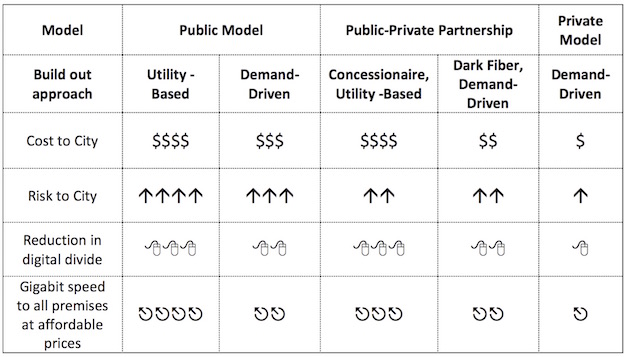The fiber-to-the-premise analysis run by the City and County of San Francisco nailed it: providing gigabit capability to every home and business in the City means either treating it like a normal municipal utility and taxing everyone to pay for it – $43 a month, they figure – or taxing everyone less – $26 a month – and making up the rest with subscription fees from people that want to use it.
The everyone pays, everyone gets model means a big initial buildout for something close to a gigabuck, with the $43 monthly fees split between paying that off and running the system as a municipal utility. The everyone pays, users pay more model brings in a private sector partner to build and run it, with the $26 everyone pays covering construction and some core operating costs, and the monthly subscriber fee – $70 for residences, $100 for businesses – paying the bulk of operating expense.
The report also looks at a couple of different market-based models, where network buildout is driven by demand, and estimates that it would pay for itself with somewhere between a 30% and 40% share of the market, depending on how it’s structured. Until the system gets over the sub count hurdle, the gap will have to be filled by taxpayer dollars, one way or another. San Francisco’s analysis did not include a demand study, but it does factor in market share as a significant risk factor.
San Francisco’s report is a high level analysis, and good reading if you like that sort of thing. It’s not an action item, so it just has to ask all the questions. It doesn’t need to answer them. Yet.

